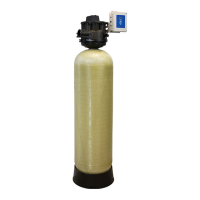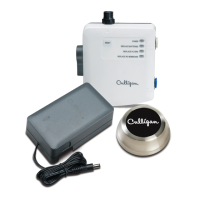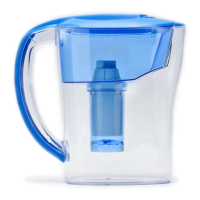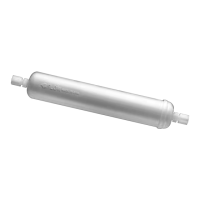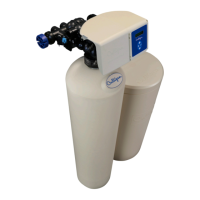Suggested Preventative Maintenance 57
Cat. No. 01016370
Suggested Preventative Maintenance
Sanitizing Procedure
A water softener in daily use on a potable water supply generally requires no special attention other than keeping the salt
tank filled. Occasionally, however, a unit may require sanitization under one of the following conditions:
• At start-up time.
• After standing idle for a week or more.
• On private supplies, the appearance of off-tastes and odors, particularly if musty or “rotten egg” (caused by harm-
less sulfate-reducing bacteria).
NOTE If the water supply contains iron, regenerate the softener before sanitizing to remove iron from the
resin.
CAUTION! HAZARD FROM TOXIC FUMES! CHLORINE BLEACH AND COMMON IRON CONTROL
CHEMICALS MAY GENERATE TOXIC FUMES WHEN MIXED.
• IF THE UNIT USES CULLIGAN SOFNER-GARD® OR OTHER COMPOUNDS CON-
TAINING SODIUM HYDROSULFITE, SODIUM BISULFITE, OR ANY OTHER REDUC-
ING AGENT, DISCONNECT THE DEVICE FEEDING THE CHEMICAL(S) AND MANU-
ALLY REGENERATE THE UNIT BEFORE SANITIZING.
• DO NOT USE THIS PROCEDURE IF THE SOFTENER SALT CONTAINS IRON CON-
TROL ADDITIVES.
1. Remove the brine tank cover.
2. Pour directly into the brine chamber one-cup of common household bleach (5.25% sodium hypochlorite) for
each cubic foot of resin in the tank.
3. Manually start recharge. Allow the unit to complete the recharge cycle automatically.
If tastes and odors return frequently, even after sanitization, a continuous chlorination system may be needed. Send a
water sample to a qualified laboratory for bacterial analysis.
Analyzing the System
Analyzing the problem involves three basic steps:
1. Check the system in all cycle positions.
2. Compare the data to normal operating data.
3. Determine which component may cause the problem (troubleshooting).
4. If steps 1-3 did not reveal the problem, initiate a regeneration cycle and manually cycle the valve to brine draw
(#2 position). Allow the unit to complete the brine draw cycle and observe how the system reacts.
Although it may be possible to solve a specific problem simply by changing a component, analyzing the entire system can
reveal additional problems which would otherwise require extra service calls. “Parts changing” is not the same as service.
Check the System
The following tools are needed to collect data:
• Hardness, iron and chlorine test kits
• Thermometer
• Pressure gauge, 0-120 psi
• 5-Gallon bucket and watch
• Calculator
The customer can provide most data. By collecting data prior to a service call, a “first guess” about the cause of the prob-
lem can be made and the need for any special parts can be determined. If the problem is as simple as lack of salt in the
brine tank, a service call may not be needed at all. At the end of Appendix A is a recommended system data sheet that
will assist the troubleshoot process.
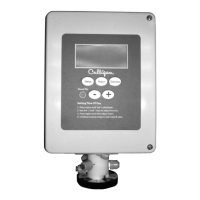
